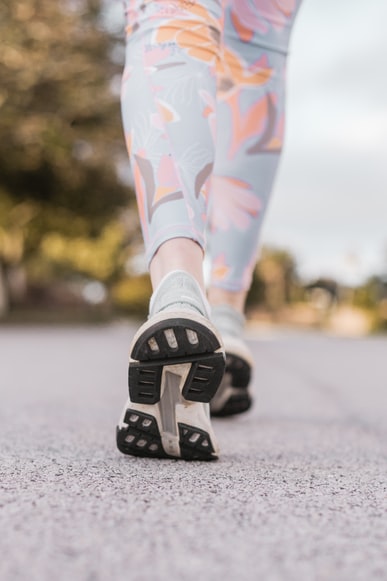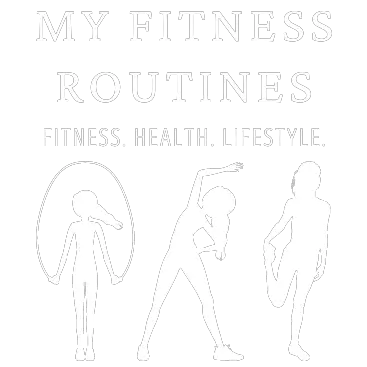8 Walking Benefits For Your Health
- kim
- 9
- Posted on
This post is all about Smart Walking Strategies and walking benefits for your health. Walking is second nature to us, something that we hardly give a second thought to. It is a mode to get from one place to another.
Walking is a simple and effective way to improve your overall health and fitness. It’s low-impact, easy on your joints, and can be done almost anywhere. Plus, it’s free! Walking regularly can have numerous benefits for your body and mind.
One of the most obvious benefits of walking is that it can help you lose weight and improve your cardiovascular health. Walking at a brisk pace can burn calories and improve your heart health, lowering your risk of heart disease and stroke. But the benefits of walking don’t stop there.
Regular walking can also help improve your mood, reduce stress and anxiety, and boost your overall mental health. It can even improve your cognitive function and memory and your lymphatic drainage in your legs helping you to feel so much better overall!
[ez-toc]
*This post includes my affiliate links
Smart Walking Strategies: 8 Walking Benefits
Walking is a great way to get outside and enjoy nature, which can have additional mental health benefits. In the following sections, we’ll explore some of the many benefits of walking and provide some simple exercises to help you get started.
Did You Know: The earliest form of exercise known to man was walking, and it is still amongst the best modern exercises

The Health Benefits of Walking
Walking is a simple and effective way to improve your overall health and well-being. Incorporating regular walking into your routine can provide a variety of benefits, ranging from heart health to improved sleep. Here are some of the key benefits of walking:
Heart Health and Blood Pressure
Walking is a great way to improve your heart health and lower your risk of heart disease. Regular walking can help to lower your blood pressure, reduce your risk of stroke, and improve your overall cardiovascular health.
Weight Management
Walking is also an effective way to manage your weight. Walking can help to burn calories and increase your metabolism, making it easier to maintain a healthy weight.
Mental Health and Stress Relief
Walking is a great way to reduce stress and improve your mental health. Regular walking can help to lower your levels of anxiety and depression and can improve your overall mood and sense of well-being.
Improved Sleep
Walking can also help to improve your sleep quality. Regular walking can help to regulate your sleep patterns, making it easier to fall asleep and stay asleep throughout the night.
Enhanced Memory and Cognition
Walking can also have a positive impact on your cognitive function and memory. Regular walking can help to improve your brain function and enhance your cognitive abilities.
Correct and Incorrect Forms of Walking
Walking correctly involves more than simply putting each foot ahead of the other. It also involves how you put your foot forward. If you are walking with your toes pointing outwards, with pressure on the outside of your foot, or with a wide stance – you are walking incorrectly. These are likely to lead you into trouble with the foot, heel, and/or lower back pain; or worse by causing plantar fasciitis or Achilles tendon.
So, what is the correct form of walking?
- A good stance is the first step. Your feet should not be wider than 4 inches apart. Also, ensure that your toes point straight ahead.
- Long strides are better than taking short steps. Make sure that your feet land heel first, then mid-foot, and finally the toes. Lifting your foot for the next step should be exactly the reverse.
- Arms should be held at 90 degrees and moved forward and back. Swinging your arms across your body will hamper your speed.
Self-Assessments for Walking the Right Way
The best way to figure out if you are walking correctly is to meet an exercise professional. However, the following self-assessments will also help.
- Walk slowly in a straight line putting your heel down first. If your toes do not point outwards, you are doing it correctly.
- Stand with your toes pointing ahead, your feet apart (hip-width), and squat. Remember, your heels should not lift up while doing this. Ant deviation of your knees – either in or out, indicates incorrect walking.
- To know if you are pushing off correctly with your feet while walking, stand on one leg and try to touch the floor with the opposite hand. A wobbly leg indicates you are not.
Benefits of Walking as a Form of Exercise
Now that we have the mechanics of walking as an exercise out of the way, let us look at the benefits of walking – both physical and mental and Smart Walking Strategies.
Unless you are into sculpting your muscles, physical activity need not be either for long periods or of high intensity. If you are keen to maintain your health, a mere 30 minutes of walking daily will suffice.
There are no risks involved in walking as an exercise. The best part is that walking can be done at a pace suitable to you and at any time of the day.
According to experts, walking at a pace that gets you slightly breathless may lower the risk of heart disease, high cholesterol, diabetes, and high blood pressure.
Scientists have also found that walking lowers the risk of Alzheimer’s disease and dementia. Walking is also a great stress buster. A nature walks not only calms your brain but also improves your creative thinking abilities.
Converting a Walk to Exercise: 8 Walking Benefits
The only difference between a walk and walking for exercise is your form, speed, and duration.
While walking as an exercise has to be faster than a mere walk, the goal is not to break any records. A brisk walk is good enough. Of course, how brisk it is will depend on your fitness level. For those who are just starting physical activity, a 20-minute mile is a good start. If you are physically fit, try completing a mile in 15 minutes.
A good way to judge your fitness level while walking is to check your breathing. If you are breathing heavily but can still converse, your pace is okay.
Once you are comfortable with the 15-minute mile, increase your speed and try to do it in 13 minutes. The faster you walk the higher the walking benefits you will get.
Aerobic Activity
Walking is also a great way to improve your aerobic fitness. Aerobic exercise, also known as cardio, is any activity that increases your heart rate and breathing rate. Walking at a brisk pace can help you achieve the recommended 150 minutes of moderate-intensity aerobic activity per week.
Aerobic activity can improve your cardiovascular health, lower your blood pressure, and reduce your risk of chronic diseases such as heart disease, stroke, and diabetes.
Interval Training
Interval training is a type of exercise that alternates between periods of high-intensity activity and periods of rest or low-intensity activity. Walking can be an effective form of interval training, especially if you incorporate hills or stairs into your workout.
Calorie Burning
Walking is a low-impact activity that can help you burn calories and lose weight. The number of calories you burn while walking depends on several factors, such as your weight, walking speed, and terrain. Here is an estimate of the number of calories burned per hour of walking for a person who weighs 150 pounds:
- Walking at a moderate pace (3.5 mph): 300 calories
- Walking at a brisk pace (4.5 mph): 400 calories
- Walking uphill: 500-600 calories

Strategies to Remain Healthy and Fit Through Walking
Walk daily
You need to put in at least 30 minutes of a daily brisk walk to enjoy the health benefits. It is not necessary that the 30 minutes need to be in one go, although it is better.
Three sessions of 10 minutes each daily to start with is a big step forward. Your goal should be to reach that 30-minute target and then beyond. There are many ways where you can use walking as an exercise.
- Walk up the stairs instead of using the elevator/escalator to help lift your rear end
- Try to walk to your neighborhood shops instead of taking out the car.
- If you use public transport, get off one stop away from your home and walk.
Set and then increase the intensity
The amount of energy expended by running or walking a mile is the same. The only difference is that walking takes a longer period of time. Set yourself a target in terms of distance and time.
Keep monitoring how long it takes you to cover the same distance every day. Increase the distance as your fitness improves, while keeping the time constant.
The human body gets used to physical activity rather quickly. The trick to remaining healthy is to increase the intensity of physical activity. Walking up a slope, alternating between brisk and moderate paces, and increasing the distance you walk are some methods of increasing the intensity.

Make your Walk a Fun Activity
The mind can tire of the same activity very quickly. Given below are some methods that will help you enjoy your physical activity.
- Pick different routes for your walk. This will ensure that you do not get bored with the same sights every day.
- Find a companion to accompany you on your walks.
- Change your timings – not every day but maybe after every week. You could, for example, walk one week in the morning and the next in the evening.
- Explore your surroundings as you walk. Walking for exercise does not mean that you do not observe things around you.
- Schedule a family walks with your kids. It is great for bonding with them as well as passing on a good habit to the next generation. Busy parents can still get into a good workout!
Stretching
Before you start walking, it’s essential to stretch your muscles to prevent injury. Start with some simple stretches for your neck, shoulders, and back. Gently roll your head from side to side, and shrug your shoulders up and down.
Next, stretch your hamstrings, quads, and calves. You can do this by standing with one foot in front of the other and bending your front knee while keeping your back leg straight. Hold the stretch for 15-30 seconds, then switch legs.
Cooling Down
After your walk, it’s important to cool down to prevent muscle soreness and stiffness. Slow down your pace and walk for a few minutes to allow your heart rate to return to normal.
Next, stretch your muscles again, focusing on your legs, back, shoulders, and neck. Take deep breaths and focus on relaxing your muscles as you stretch. You can also use a foam roller or massage ball to work out any knots or tight spots.
Remember to listen to your body and adjust your walking technique and posture as needed. With proper form, stretching, and cooling down, you can enjoy the many benefits of walking while avoiding injury.
Walking for Specific Health Conditions
Walking is a low-impact exercise that can be beneficial for people with certain health conditions. Here are some ways walking can benefit specific health conditions:
Walking for Arthritis
If you have arthritis, walking can help reduce joint pain and stiffness. Walking regularly can also help improve your overall joint health and flexibility. It is important to wear supportive shoes and start with short walks, gradually increasing the duration and intensity over time.
Walking for Diabetes
Walking can help regulate blood sugar levels, making it a great exercise for people with diabetes. Walking after meals can also help improve digestion and lower blood sugar spikes. Aim for at least 30 minutes of brisk walking per day.
Walking for Obesity
Walking can be an effective way to lose weight and manage obesity. Walking burns calories and increases metabolism, helping you shed excess weight. Aim for at least 150 minutes of moderate-intensity walking per week.
Choosing the Right Walking Gear
When it comes to walking, choosing the right gear is crucial to ensure a comfortable and safe experience. Here are some tips on selecting the right walking gear for you.
Selecting Walking Shoes
Walking shoes are the most important piece of gear for any walker. They should provide adequate support and cushioning to protect your feet and joints from impact. When selecting walking shoes, keep the following in mind:
- Look for shoes that fit well and feel comfortable. Make sure there is enough room for your toes to move around.
- Choose shoes with good arch support to prevent foot pain and injury.
- Consider the type of terrain you will be walking on. If you will be walking on uneven surfaces, choose shoes with good traction.
- Replace your walking shoes every 300-500 miles or when they start to show signs of wear and tear.
Remember to consult with your healthcare provider before starting any new exercise program, especially if you have knee pain, rheumatoid arthritis, or other health conditions.
Using a Pedometer or Fitness Tracker
Using a pedometer or fitness tracker can help you track your steps and monitor your progress. Here are some tips on using a pedometer or fitness tracker:
- Choose a pedometer or fitness tracker that is easy to use and fits comfortably on your wrist or waist.
- Set a daily step goal and try to increase it gradually over time.
- Use your pedometer or fitness tracker to track your progress and celebrate your achievements.
Special Walking Exercises
If you want to take your walking routine to the next level, you can try some special walking exercises. Two popular ones are 8 Shape Walking and Infinity Walking.
8 Shape Walking
8 Shape Walking is a simple exercise that involves walking in the shape of an “8”. To do this exercise, find a flat surface, such as a park or a track, and walk in the shape of an “8”. Start by walking in a straight line, then make a wide turn to the right, then a wide turn to the left, and continue walking in a straight line. Repeat this pattern for 10-15 minutes.
This exercise can help improve your balance and coordination, as well as engage your core muscles. It can also be a fun way to mix up your walking routine.
Infinity Walking
Infinity Walking is another exercise that involves walking in a specific pattern. This exercise involves walking in the shape of an infinity symbol (∞). To do this exercise, find a flat surface, such as a park or a track, and walk in the shape of an infinity symbol. Start by walking in a straight line, then make a wide turn to the right, then a wide turn to the left, and cross over your previous path. Continue this pattern for 10-15 minutes.
Infinity Walking can help improve your balance and coordination, as well as engage your core muscles. It can also be a meditative exercise, as the infinity symbol is often associated with the concept of infinity and eternity.
Both 8 Shaped Walking and Infinity Walking can be combined with other exercises, such as Tamil Siddar, Om Mantra (see video below), and Yoga Mudra, to create a more holistic walking routine. Remember to listen to your body and adjust the intensity of the exercises as needed.
Frequently Asked Questions (FAQs)
What are the benefits of walking in an 8 shape?
Walking in an 8 shape is a great exercise that can provide a wide range of benefits. It helps to improve your overall fitness level, balance, and coordination. It also helps to strengthen your leg muscles and can improve your cardiovascular health.
Can 8 shape walking help with weight loss?
Yes, walking in an 8 shape can be an effective way to lose weight. This exercise can help you burn calories and increase your metabolism. However, it’s important to remember that weight loss requires a combination of exercise and a healthy diet.
How many calories can you burn while doing the 8 shape walking exercise?
The number of calories you burn while doing the 8 shape walking exercise depends on several factors, such as your weight, age, and fitness level. On average, you can burn between 200-300 calories per hour while doing this exercise.
Is 8 shape walking a good exercise for reducing belly fat?
Yes, 8 shape walking can be an effective exercise for reducing belly fat. This exercise can help to tone your abdominal muscles and burn calories, which can help to reduce fat in your midsection.
What are the rules for doing the 8 shape walking exercise?
To do the 8 shape walking exercise, you should find a flat and open area, such as a park or a gym. Start by walking in a straight line, then turn left and walk in a semi-circle, then turn right and walk in another semi-circle, and finally turn left again and walk in a straight line. Repeat this pattern for a set amount of time or distance.
Are there any disadvantages to doing the 8 shape walking exercise?
While there are many benefits to doing the 8 shape walking exercise, there are some potential disadvantages to be aware of. This exercise can be challenging for people with balance or coordination issues, and it may not be suitable for those with joint pain or other health conditions. It’s important to consult with your doctor before starting any new exercise routine.
So, what are you waiting for – let’s walk the talk! Do you have any Smart Walking Strategies or Walking Benefits you want to share? Please comment with them below!
Disclaimer: Please note that this blog post, 8 Walking Benefits, is not a substitute for medical advice. The information provided above should not be used as a basis for diagnosing, treating, or preventing any medical condition or disease. Before making any modifications to your diet, sleep regimen, daily routine, or exercise program, consult your physician. My Fitness Routines is not liable for any physical harm or injury that may result from the suggestions, opinions, or recommendations provided in this article.

This is a lot of good information. I’m not able to walk a lot but with the weather warming up I am trying to get out more.
Walking is great exercise and the stretching is important too.
I have heard such great things about the health benefits of walking. I know there are values to different walking speeds too. So interesting
I wish I had a nice park area to walk in. Everything around here is broken sidewalk with piles if unscooped poop. Welcome to New York City! OMG!
this is good to know thank you!
The best walks/hikes we ever did was the year we lived in Vermont and walked/hiked up the Adirondack Mountains. Lost a good amount of weight, gained great cardio and strength endurance, and we were able to do it with the boys. It does make it a lot less boring when you have someone to walk with.
Walking can be a family activity and can definitely be made into fun!
I walk and I can really tell a difference if I do not walk for a few days. Walking is great for me now that I am retired
Acting outdoor walking is something that I enjoy doing. Thanks for these helpful tips